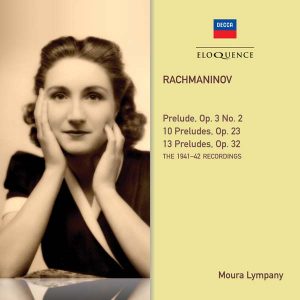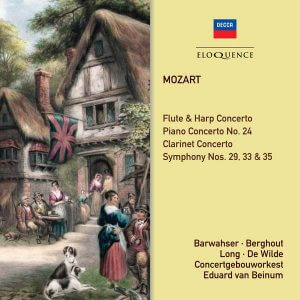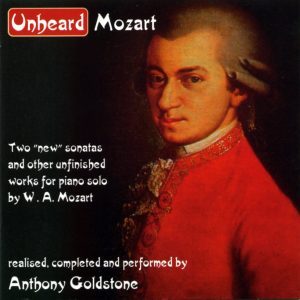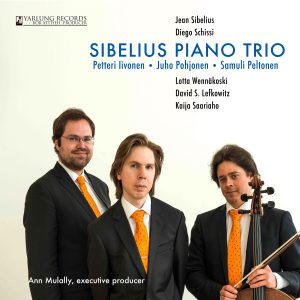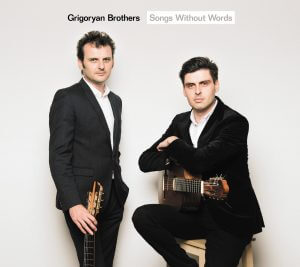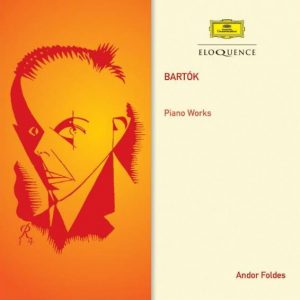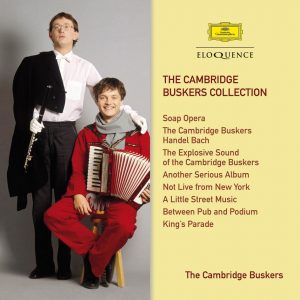DECCA 482 6291 (10 CDs)
reviewed by Neville Cohn
 I was a junior school boy when Eileen Joyce came to Cape Town and I still recall the thrill of hearing the great Australian pianist playing Beethoven’s Fur Elise as an encore – and her predilection for wearing a different gown for each work on the program.
I was a junior school boy when Eileen Joyce came to Cape Town and I still recall the thrill of hearing the great Australian pianist playing Beethoven’s Fur Elise as an encore – and her predilection for wearing a different gown for each work on the program.
At the time, it would probably have been fair to say that Joyce and Donald Bradman were the two most famous of living Australians. Times change. While Bradman still holds an honoured place in the affections of Ozzies, Joyce’s star has dulled somewhat.
Recently, I spoke to a number of concertgoers in their 70s and older; they instantly recalled the great pianist. But of eleven teenage piano students I spoke to about Joyce, only three knew who she was. Another wondered if she was in one of Australia’s swimming teams at the Commonwealth Games. Another asked if she was the pianist who was born in a tent!
This collection of ten CDs incorporating just about everything Joyce recorded over the years will go a long way to rescuing her from an increasing and undeserved obscurity.
Joyce had a penchant for the music of Grieg with which she was strongly associated A good deal of her celebrity rests on her many accounts of his piano concerto: this one is splendid – as are her performances of many of the celebrated Norwegian’s miniatures. In Joyce’s hands, they come across as a catalogue of delights, a series of tiny sonic gems which variously gleam, glitter or twinkle. They were recorded for the Parlophone label in 1939.
During 1938 – also for Parlophone – Joyce recorded a number of Rachmaninov’s preludes. They come across like a chaplet of flawless gems.
I listened with particular interest to her account of Tchaikowsky’s Piano Concerto No 2. It’s a frankly terrible performance dating from 1946 with the London Philharmonic conducted by Grzegorz Fitelberg. It was never released during Joyce’s lifetime, a completely understandable decision. Its opening is as stodgy as a cake fallen flat – and it was with a sense of relief that I listened to its closing moments. It is 33 wasted minutes.
(Intriguingly, there’s another early recording of the work by yet another Australian pianist – Noel Mewton Wood, sadly now almost forgotten. His virtuosity is thrilling. It does not so much attract the attention as seize it in a vice-like grip. Mewton Wood died tragically young, committing suicide in the wake of the death of a lover.)
Incidentally, there’s another Joyce recording now released for the very first time: Chopin’s Waltz in E minor Op. Posth, dating from 1947.
In choosing the repertoire which made her famous, Joyce was a realist. She played only that over which she had complete physical and emotional control (except, of course, the Tchaikowsky concerto). Not for her, say, the Everests of Beethoven’s late sonatas or the intricacies of the preludes and fugues of Shostakovich.
In public and in the recording studio, she played what she knew she could do as well – and often better – than her fellow musicians: miniatures by Grieg, early Beethoven, numbers of contemporary concertos, usually by British composers. Listen to Joyce playing John Ireland’s Piano Concerto in E flat: it’s a model of its kind. She sails through it’s often excruciatingly taxing measures as if to the manner born. And her account of Shostakovich’s Concerto for piano, trumpet and orchestra, with Leslie Howard presiding over the Halle Orchestra, comes up trumps, too.
There’s a very rare recording of Turina’s Rapsodia Sinfonica with orchestra conducted by Clarence Raybould – and a tidal wave of piano miniatures many of long vanished from the repertoire notwithstanding their charm: Henselt’s Were I a Bird, Farjoen’s Tarantella, Bergman’s Polka Caprice and Schlozer’s Etude in A flat – and more.
Some commentators have been snide about Joyce’s work in the baroque revival which opened up a new world for many whether as performers or listeners. Since
then, much scholarly research has delivered ever more meaningful and stylistically accurate recordings of baroque-era keyboard music demonstrating an understanding simply not available when Joyce made these recordings. But without those early efforts, the baroque renaissance may well have been delayed for years, decades even.
There is, incidentally, a series of remarkable water colours of Joyce, some alone at the keyboard or with co-harpsichord players George Malcolm, Thurston Dart and Denis Vaughan in London’s Royal Festival Hall. These now grace the walls of the Eileen Joyce Studio at the University of Western Australia.
Ample liner notes include a first rate commentary on Joyce’s early years by David Tunley – and fascinating material by Cyrus Meher-Homji on the technical side of producing Joyce’s many recordings.

